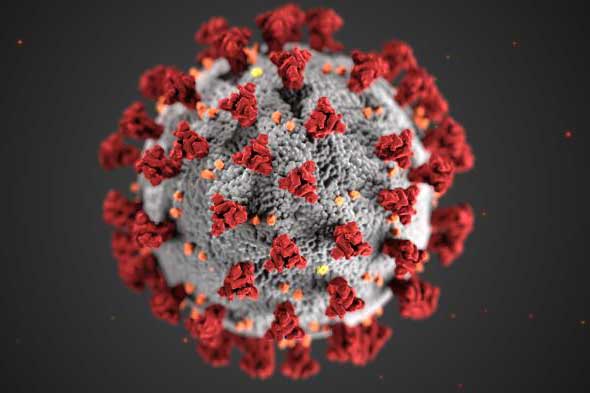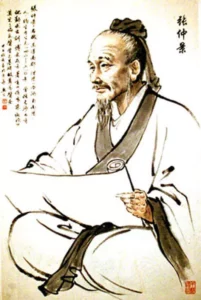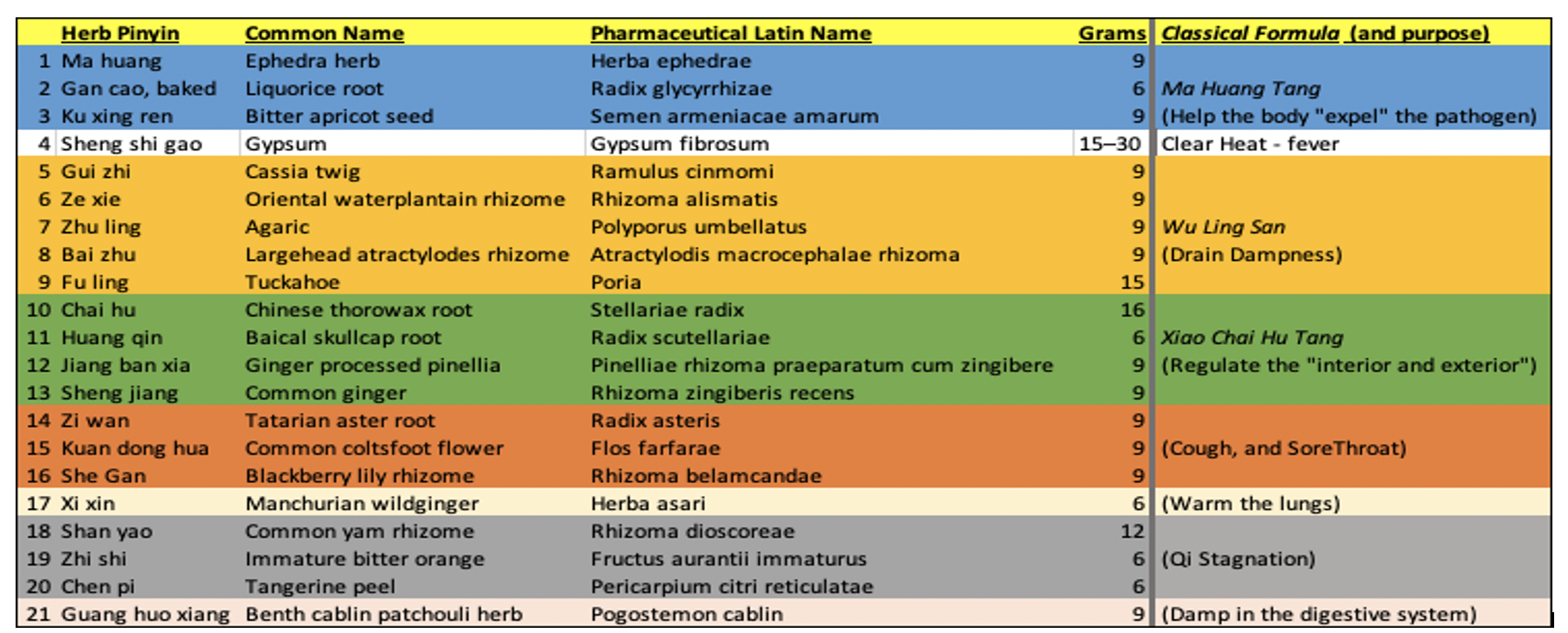COVID – A TCM Perspective

Using Chinese Herbal Medicine in parallel with Western medical treatments has been common in the treatment of Covid-19 in China, resulting in improved patient outcomes and reduced mortality. The approach in China is to get a broad-spectrum herbal formula distributed to as many people as possible, as quickly and cost-effectively as possible.
The approach in my clinic is to treat each individual with a very targeted formula to help them recover as quickly as possible (in a matter of days instead of weeks if they were untreated). My training in Chinese Medicine has allowed me to successfully treat patients with active Covid infections, resulting in rapid improvement in their symptoms within days after starting treatment. I have used herbal therapy and acupuncture to successfully treat patients for post-Covid recovery, and long-haul Covid patients.
Both institutional therapy (used in China) and individualized therapy (in my clinic) are effective in their own way, and for their own purpose.
Institutionalized Therapy for a Large Population
There is a now formula in China that was tested and shown to reduce Covid-19 mortality and treat symptoms of Covid pneumonia.
The formula is called: Qing Fei Pai Du Yin (QPD) It is translated as: “Clear the Lungs Detox Drink”. Considering that the lungs are often severely affected by the virus, resulting in difficulty breathing and long-haul pulmonary symptoms, this is an appropriate name for the formula. The list of ingredients can be found in a study published in Evidence-Based Complimentary and Alternative Medicine.
 My analysis of this formula in the following table shows that it is based on a combination of three classical formulas from the book: Shang Han Lun (Treatise on Cold Damage) written by the Chinese physician Zhang Zhong Jing in 220 AD. This book has been used as the foundation of using Chinese Herbal Medicine to treat influenza and related illnesses for the subsequent 2000 years. The three classical formulas in QPD were then modified with additional single herbs for the most-common symptoms of Covid including phlegm, severe cough, high-fever and digestive issues.
My analysis of this formula in the following table shows that it is based on a combination of three classical formulas from the book: Shang Han Lun (Treatise on Cold Damage) written by the Chinese physician Zhang Zhong Jing in 220 AD. This book has been used as the foundation of using Chinese Herbal Medicine to treat influenza and related illnesses for the subsequent 2000 years. The three classical formulas in QPD were then modified with additional single herbs for the most-common symptoms of Covid including phlegm, severe cough, high-fever and digestive issues.

A table from the journal Evidence Base Complementary and Alternative Medicine (vol. 2021) with analysis by Dr. Vel Natarajan (addition of right-most column and color highlights) to describe the functions of the herbs in the formula.
Although not every patient will have every one of the symptoms in the list, this formula will treat the broad-spectrum of Covid symptoms using a broad-spectrum approach. This approach is meant to cover as many Covid disease-patterns as possible in a single dose.
The point of this I believe, is to be able to allow a standardized formula to be given to as many people as possible at a time, to halt disease progression and reduce mortality, in the most cost-effective and time-effective way in the middle of a pandemic. In other words, I think they might have said something to the effect of: “Let’s come up with a broad approach to get us a high-success rate in preventing deaths, and out to as many people as quickly and efficiently as possible.”
This approach allowed them to bypass the time it would normally take a TCM Doctor to diagnose each individual patient with their disease-pattern, come up with a custom formula, and dose that formula for each person. It’s a matter of emergency action.
Individualized Therapy for the Individual patient:
The first assumption of my approach is that the sickest people who are supposed to be in critical care are going to be in the hospital, and will not be contacting me. The patients who contact me have (relatively) milder symptoms that are not life-threatening, have time to schedule an appointment, and have a telemedicine consultation from their home.
The symptoms I typically see and have treated for Covid are:
- body aches
- chills/fever
- nasal congestion
- headache
- cough (dry or phlegmy)
- sore throat
- digestive upset (nausea, diarrhea, or constipation)
Normally as a disease progresses, the pattern, and symptoms change, and the formulas used will also be modified with each subsequent bottle of herbs. For example, the first bottle of herbs will stop the progression of the main symptoms of: fever, headache, sore-throat, and phlegm. If needed, the next formulation would treat the remaining symptoms of cough, some phlegm and fatigue. This is a more time intensive, approach. During a pandemic, time is in short-supply and this individualized approach is not something that helps save large portions of the population from mortality or morbidity.
Each of the above symptoms in certain combinations has different herbal formulas which are appropriate. This means each formula for that patient is custom-made to give the fastest relief possible. There are no “extra” herbs to treat symptoms that are not present. This means the formula is less “diluted”, and more powerful to treat the symptoms that are present. I may only use one of the formulas for one patient, and NONE of the formulas in QPD for another patient.
In summary:
The institutional approach will help the largest number of people with the least amount of effort/resources involved per patient. But there may be a higher number of patients who the formula will not help because the formula is not targeted. The targeted approach takes more time from the doctor to treat, requiring an intake, exam, diagnosis and custom formulation. But it will give fast results with a likely higher success rate.
Both approaches give the most “bang for the buck” for their respective situations. Each approach takes into account the different populations being treated, the urgency and severity symptoms, and risk profiles associated with the situation.


